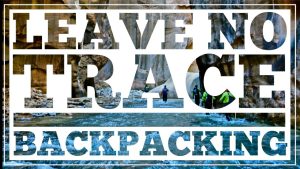Ep. 14 – Snake & Cougar Safety
Some of the links on this page are affiliate links
Snakes & Cougars
I’m Dave Collins with cleverhiker.com, in this episode we’re going to take a look at the danger that snakes and cougars present on the trail.
Snakes are the type of animals that many backpackers are very nervous about and would rather avoid altogether.
But seeing snakes in the backcountry can actually be very rewarding. They’re truly strange and beautiful creatures and they play critical role in the natural ecosystem.
—
Bites from venomous snakes should not be taken lightly, especially if you’re days away from medical attention, but fatalities from snakebites are incredibly rare.
Of the estimated 7,000-8,000 venomous snakebites per year in the United States, only an average of five people actually die from snakebites.
That’s means less than 1 tenth of a percent of the people bitten by venomous snakes actually die from their wounds. And most snakes in the wilderness aren’t even venomous.
In North America, venomous snakes are more prevalent in warmer climates and it’s very unlikely likely that you’ll encounter them in northern climates.
The four types of venomous snakes to watch out for are rattlesnakes, cottonmouth, copperhead, and coral snakes.
Fatalities from snakebites are rare, but knowing how to avoid snakebites and knowing what to do if you are bitten is an absolutely crucial skill for any backpacker.
—
The important thing to remember with snakes is that they don’t want to hurt you. Snakes don’t eat humans. They eat mice and rodents and they don’t want to risk getting injured by large animals.
Snakes will only attack you if they feel threatened, so provoking them or trying to pick them up is just about the last thing you want to do.
Don’t put a snake in a position where they feel like they have to defend themselves and it’s unlikely that you’ll ever have to deal with a snakebite.
Avoiding close encounters with snakes is the key to staying safe. You will probably hear a snake before you see it, so keep your ears open and your eyes on the trail.
Never put your feet or hands in places where you can’t see them. For example, when stepping over a rock or tree, step on the tree and then over it, rather than putting your foot close to a place you can’t see where a snake might take shelter.
Feet and ankles are the most common bite locations, followed by hands. So be careful about picking things up from the ground too.
Snakes might hide under rocks, logs, or even your pack after it’s been sitting in one place for a while.
Stay on the trail in snake country and avoid thick grass and brush. Snakes can’t hear sounds, but they can feel vibrations.
So stomp on the ground if you have to walk through a brushy area and the snakes will likely know you’re coming and get out of the way.
If you’re going to be hiking off trail for long distances in snake territory, you can protect yourself with long pants, ankle high boots, or even snake proof gaiters.
When in snake country, you should shake out your sleeping bag and check your shoes before putting them on, just to make sure there aren’t any hiding snakes or other critters.
Remember, the key to avoiding snakebites is to leave them alone and keep your distance. Rattlesnakes for example can strike from half their body length away, so don’t take any chances.
—
If you do get bitten by a by a snake that you believe to be venomous, stay calm and get out to medical help as soon as you can.
Even if you do get bitten by a venomous snake, they might not use their venom on you because you’re not their prey.
A good percentage of bites to humans from venomous snakes are dry bites, meaning that the snake didn’t release any venom when it bit.
Still, even a bite from a non-venomous snake can cause infection or allergic reaction, so it’s important to treat the wound and seek medical attention.
If bitten, allow the bite to bleed freely for about thirty seconds, then wash the wound with soap and water and dress it to keep it clean.
Remove any jewelry or tight clothing around the bite before the area starts to swell and remain calm to slow the spread of venom. Remember, it might be a dry bite.
If the bite begins to swell and change color, the snakebite was probably venomous. It’s critical that the victim remains calm, doesn’t over exert him/herself, and gets medical attention as soon as possible.
Keep the victim still and quiet. Restrict movement to prevent the flow of venom. Keep the bitten area at or slightly below heart level to reduce the flow of venom.
Transport the victim to the hospital for anti-venom treatment. Since the victim should exert as little energy as possible, using a makeshift stretcher with some stick and extra clothing would be best.
If that option isn’t available, have the victim walk out at a relaxed pace without carrying a backpack to minimize effort.
Remember, once properly treated, most snakebites will not have lasting effects and the chances of a fatal snakebite are very small.
—
There’s so much misinformation out there about what to do when bitten by a snake that it’s almost more important what you don’t do if you get bitten.
There aren’t a lot of ways to treat a snakebite wound properly in the field, so don’t get caught up wasting your time on treatments that could be harmful.
Don’t apply a tourniquet to the bitten limb. Constricting blood flow will cause the venom to do more damage to the bite site, rather than diluting the toxins and reducing tissue damage.
Don’t cut the wound in an attempt to remove the venom. You’ll often do more damage that way and increase the victim’s chances of infection.
Don’t try to suck the venom out with your mouth or with a suction device. You may do damage to sensitive tissue around the bite and you won’t remove much venom.
Don’t apply ice to the area, which will reduce healthy blood circulation and could damage the fragile tissue near the bite wound.
Don’t let the bite victim eat or drink anything, especially caffeine or alcohol. Small sips of water are ok if it will be a long time before you can get medical attention.
Don’t try to track and kill the snake to bring it in. Attempt to identify the snake, only if you can safely. Don’t waste time hunting for the snake and risking another bite.
—
Remember, most snakebites are not life threatening, but unless you are absolutely sure of the species of snake, you should treat the bite seriously.
Keep calm, act quickly, and it’s likely that there won’t be any lasting effects from the bite.
—
Cougars are an incredibly rare sight for any backcountry visitors, even for scientists trying to count their numbers and track their movements.
Cougars are also referred to as mountain lion, puma, panther, and catamount. They are the largest wildcat in North America and their populations are almost exclusively on the western side of the continent.
The vast majority of backpackers will go their entire lifetimes without seeing a cougar in the wild. If you ever do see one, you’ll be one of the luck few that do.
The reason cougars are seldom seen is that they’re largely nocturnal animals that hunt during dusk and dawn. They are very stealthy and they generally want absolutely nothing to do with humans.
Cougars are an animal that raise a lot of concern and attention from backcountry enthusiasts, but pose almost no serious threat.
Since the year 2000, there been a total of about 50 cougar attacks in all of North America, and only three of those attacks actually resulted in a fatality.
—
If you do see a cougar in the wild, give the impression that you are a big, dangerous predator that is not afraid.
Don’t run, play dead or act timid. Instead, maintain eye contact, stand tall, put your arms over your head and speak slowly but firmly.
If necessary, make loud noises, show your teeth, and throw rocks to show the cougar that you are not prey.
Keep your group together and keep children close at all times. Back away slowly without turning around and give the cougar space and time to move on.
In the rare event of an attack, fight back with everything you have. Direct your blows to the eyes, nose, ears, and face of the cougar.
An attacking cougar can be driven away, so use any weapon you can and defend your head and neck.
—
Again, it’s extremely unlikely that you’ll ever even see a cougar in the wild, much less have to defend yourself against one. But if you ever do, now you know how to protect yourself.
I’m Dave Collins with CleverHiker.com. Hike light, hike smart, and have fun.
MORE EPISODES IN THIS SERIES
View all





